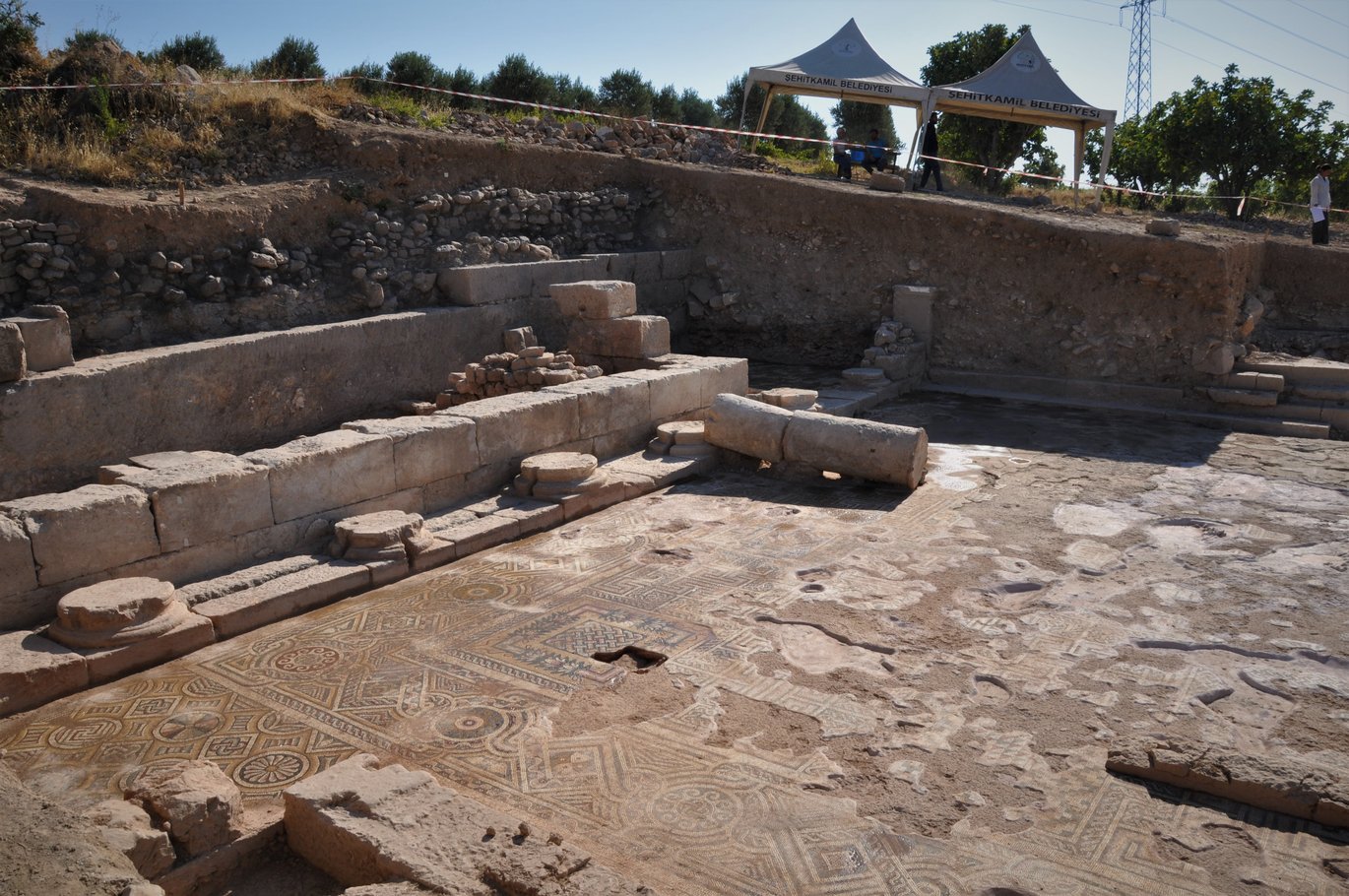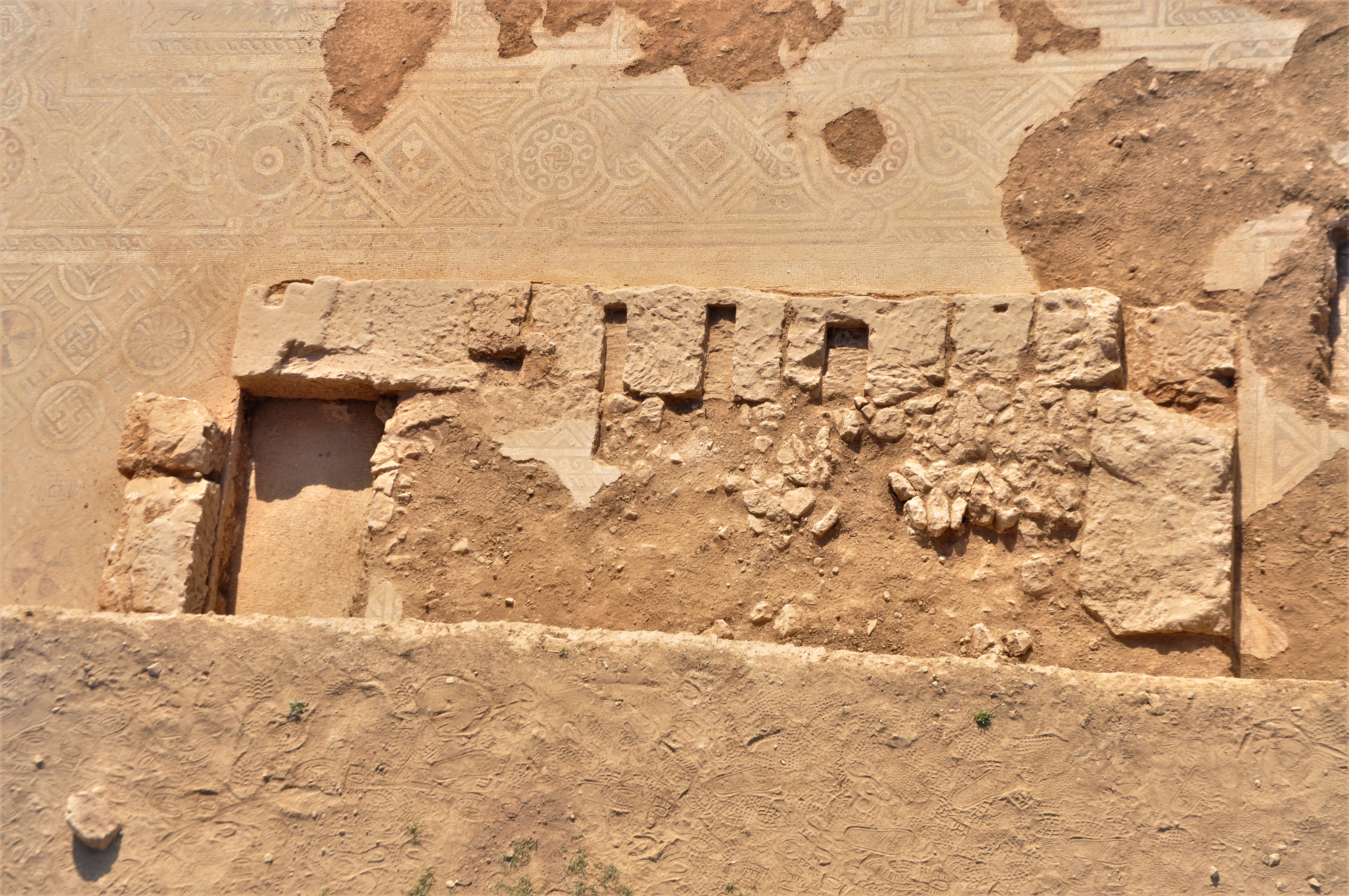Liturgical links
Assistant Professor Michael Blömer explores church architecture and networks of ritual praxis in late antique North Syria.


By Assistant Professor Michael Blömer
The rituals performed resonate in the layout and the decoration of church buildings. Especially for the early phases of Christianity, the study of architecture is important to understand liturgical praxis and changes in liturgy. Moreover, the presence and absence of specific architectural features that are indicative of liturgical praxis give precious information about connections and rifts between the cities of the Empire and their Christian communities.
In the UrbNet-affiliated excavations at Doliche, south-east Turkey, one focus is on the contextual study of a large early Christian basilica (Fig. 1). By now, approximately one third of the building has been excavated. Pillaging, the extraction of stones for reuse, and erosion have caused heavy damage, but the remains of the church with rich mosaic floors are still impressive and convey a good impression of its ancient appearance.
Among the most interesting discoveries is a peculiar raised platform in the central nave that was fenced off with screens (Fig. 2). This is a bema, a rare architectural feature that is known only from late antique churches of north-west Syria (Fig. 3). In each town, one church with a bema existed, usually the most significant and largest. Its precise function, however, is a hotly debated topic. Apparently, the clergy was seated there during parts of the service, facing the sanctuary.
The presence of a bema in Doliche is a surprise. So far, this feature is almost exclusively attested in the territory of Antioch, an ancient metropolis that commanded a large hinterland. Doliche is far from Antioch. Moreover, none of the many churches in the region around Doliche has a bema. This feature is therefore exciting proof of a close connection between the cities of Antioch and Doliche in the late fourth century CE and sheds new light on the complex networks of ritual praxis in late antiquity.
